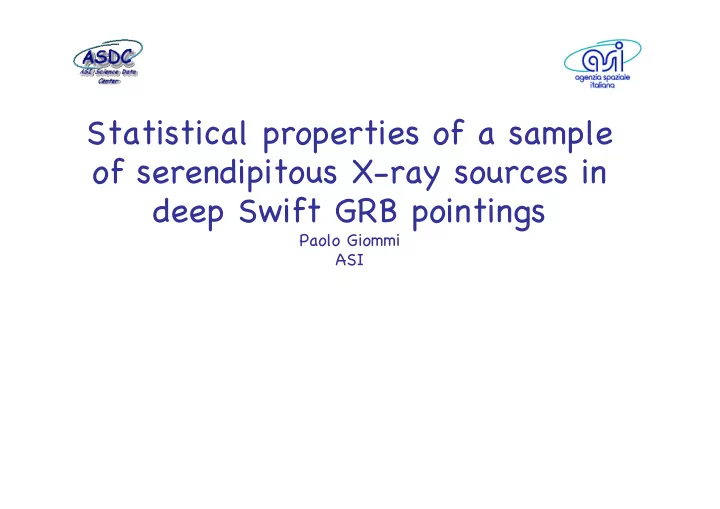

Statistical properties of a sample of serendipitous X-ray sources in deep Swift GRB pointings Paolo Giommi ASI
Swift observations archive content as of June 2008 • 14,500 observations • 3,380 distinct pointings • ~300 sq deg of sky (< 1%) More than 300 GRB detected and followed up for several days/weeks with the X-ray Telescope Unique database of optical/UV X-ray simultaneous data
Swift XRT serendipitous sources in GRBs pointigs : the “ perfect ” serendipitous survey Most X-ray sources are radio quiet QSOs Only ~1 blazar/field expected with radio flux > 10 mJy! Energy spectral slope
Swift XRT serendipitous survey in GRB deep fields 235 deep (10 4 -10 6 seconds) GRB exposures analyzed ~7,600 sources detected with off-axis < 10 arcmin Positional uncertainty 3-5 arcsecs. 160 fields are at |bII| > 20 : ~5,600 sources 156 radio/X-ray matches (blazar candidates)
The sample for this exercise 5 fields in areas of the sky covered by the Sloan Digital Sky Survey (SDSS) 240 X-ray sources GRB 050416A GRB 050416B GRB 060908 GRB 060904A GRB 050802
The sky coverage
www.asdc.asi.it/urbinoschool
Optical counterparts Optical counterparts in the SDSS-DR6 in the SDSS-DR6 55 X-ray/radio associations match 107 SDSS-DR6 objects (10 spectra) Multiple Optical Counterparts (Likelihood Ratio) - Photometric Redshifts calculation Turriziani et al. 2008, in preparation
Photometric Photometric redshift redshift distributions distributions
Recommend
More recommend